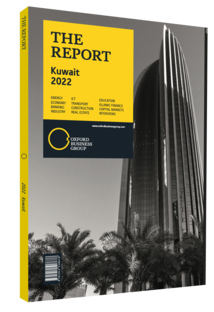MAURICIO USABIAGA: In Guanajuato, we currently have three of the largest automotive assembly plants in the world, operated by General Motors, Mazda and Honda, and coming in 2019 will be Toyota with a very large plant. We also build synergy with our neighboring states such as Aguascalientes, which has one of the largest Nissan plants in the world, and with San Luis Potosí, in which General Motors is also present.
As a result, an automotive circle of synergy has been created like few in the world. We are assembling 845,000 vehicles per year. This quantity is expected to double by 2021, at which time we are going to reach nearly 1.5m vehicles assembled in Guanajuato.
A fine example of the state's development is the inland port. It's Mexico's largest, covering 1200 ha. It services over 49 multinationals and they provide over 15,000 jobs. It has all the needed facilities: an inland Customs office, an airport and a new cargo rail line. Everything is located in the industrial corridor in Guanajuato State. The port is located at the perfect spot for companies that are looking for development opportunities, and penetration into the Mexican and North American market. I think Guanajuato will become the model for the country's future development and for all of Latin America.
SANTIAGO VILLANUEVA: In the last few years there have been many examples of big investment in the state's infrastructure. Undoubtedly, it's the state with the best connections in the country, but even so, the government is striving to create more infrastructure both at the airport and in terms of highways. In this part of the country, a cluster was built – not just for automotive, but for all kinds of industries. Having everything nearby for these large manufacturers – especially being able to have their main suppliers nearby and well connected – is vital to investment decisions.
The two main axes of the country go through Guanajuato: the one from Mexico City to Ciudad Juárez at the northern border, and the one from Mexico City to Laredo, also at the northern border. Guanajuato is the direct connection to the American market, but it is also where the two most important railroads of the country meet: the line that goes from Mexico City up to the US border and the one from Manzanillo port to Tampico port.
Infrastructure has been a pillar of the government's work, but they've observed that infrastructure can't be built with public resources alone. They therefore looked for an alternative route that could push projects forward, and PPPs allow private initiatives to join with the government for faster development and better quality. This has allowed us to have infrastructure that can compete against any other in the world.
BENJAMÍN GUTIERREZ ESPÍNDOLA: Guanajuato State has a very strategic position that helps it reach Asian markets. We have a competitive advantage over European markets just because of where we are geographically. We can reach Asian markets by ship in 14 days, but there are special products such as avocado and berries that can be shipped by plane, and our production has been growing over the last few years. And just as we did for these products, Mexico has the opportunity to develop others and attend to all markets in need, such as the Middle East. Mexico could be a strategic ally in delivering products to those countries.
We have a great number of profitable products, and we comply with international quality standards. Mexico is considered a trustworthy producer, especially in Japan, which is one of the toughest and most demanding markets; Mexico already bears a seal of trust. Each country has very unique requirements, but Mexico has the flexibility to deliver the kind of customised service needed according to each country's demands.






